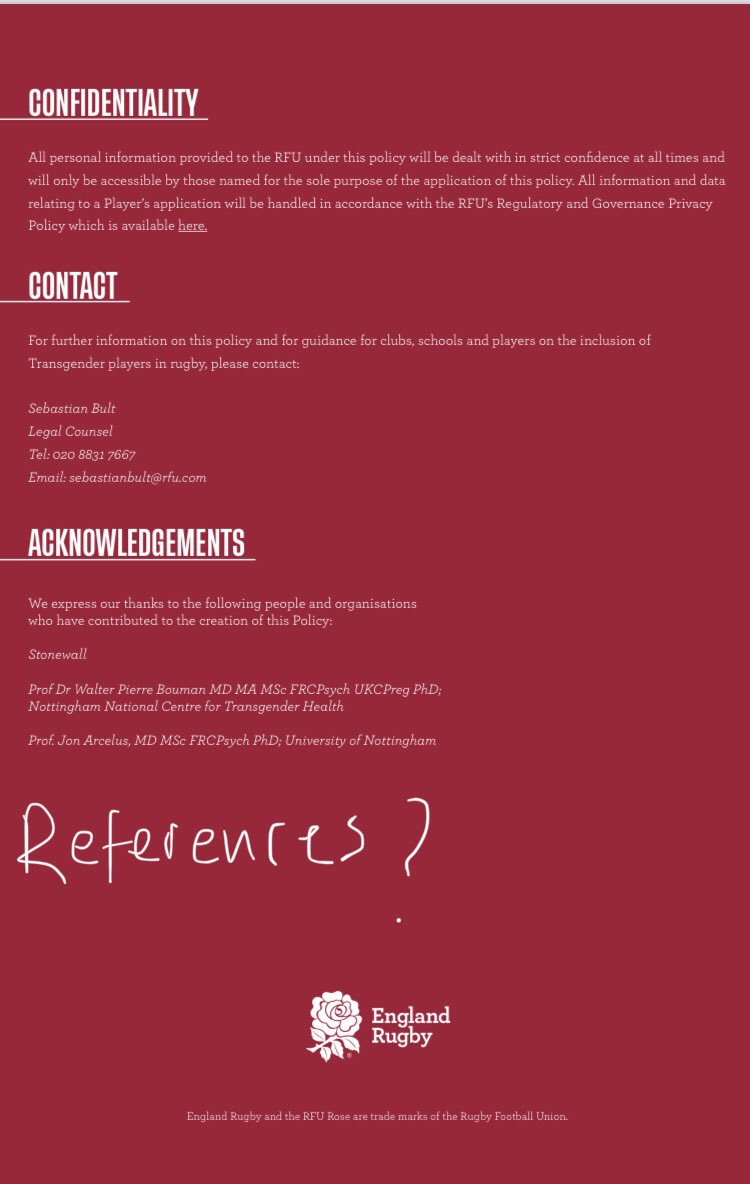
@GMB The World Rugby argument is really quite simple.
1. Forces generated in tackles by males on females present an unacceptably high risk of head injury for females.
Evidence: Extensive modelling of head/neck forces when two weights collide, basic physics.
1. Forces generated in tackles by males on females present an unacceptably high risk of head injury for females.
Evidence: Extensive modelling of head/neck forces when two weights collide, basic physics.
@GMB 2. That risk is amplified when you factor in the premise that male weight is accompanied by superior strength and superior speed.
Evidence: again, basic physics.
Evidence: again, basic physics.
@GMB 3. When they suppress testosterone in accordance with sports fed rules, transwomen lose only small amounts of strength, and there is no change to their bone structure.
Evidence: 11 published cohorts (800+ transwomen) tracked for muscle/strength changes over at least one year.
Evidence: 11 published cohorts (800+ transwomen) tracked for muscle/strength changes over at least one year.
@GMB 4. Compared with females, transwomen remain much more muscular and much stronger, and this is true even if those transwomen start out as slightly less muscular than other males.
Evidence: Novel interrogation of dataset in 3.
Evidence: Novel interrogation of dataset in 3.
@GMB 5. Thus, key aspects of transwomen physiology related to how hard they can tackle do not change significantly with testosterone suppression over a handful of years, and the risk to females in a tackle situation remains unacceptably high.
@GMB 6. Training before/during testosterone suppression should mitigate even the small losses recorded in untrained transwomen.
Evidence: multiple studies of males who train during T suppression (for medical reasons) and of male muscle response to retraining after T suppression.
Evidence: multiple studies of males who train during T suppression (for medical reasons) and of male muscle response to retraining after T suppression.
@GMB 7. Thus, transwomen athletes will almost certainly present an even larger advantage over females (where the untrained advantage tops 40% in a test of quad strength).
@GMB Footnote: The large retained advantage occurs because the baseline difference between males and females is very large, 10% in running to around 160% in a punch motion. Small losses to muscle mass have no chance of creating equal competitiveness.
• • •
Missing some Tweet in this thread? You can try to
force a refresh






